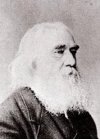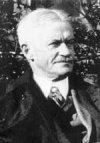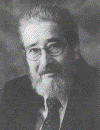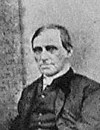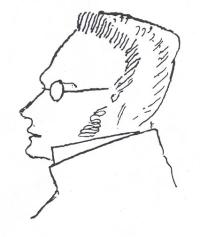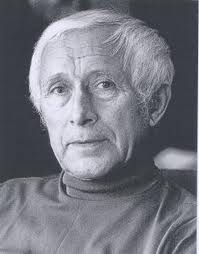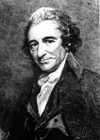“Something’s very rotten in our system.”
That’s Douglas Berman, Ohio State law prof and author of the Sentencing Law and Policy blog, as quoted in the NYT in a story titled Obama Commutes a Prisoner’s Sentence, Lengthened More Than 3 Years by a Typo. “It’s a shame that we need presidential action to take care of something everybody agrees was a mistake,” said Berman. He has much more to say in a post on his blog, which begins:
The more I reflect on the typo-correction sentence commutation of federal prisoner Cesar Huerta Cantu (basics here), and especially after re-reading this 2255 dismissal order that followed Cantu’s own effort to have a court fix its own significant sentencing error, the more disgusted I feel about the modern federal sentencing system and especially about the U.S. Department of Justice and those federal prosecutors most responsible for Cesar Cantu’s treatment by our Kafkaesque system.
He concludes:
I am hoping Bill Otis or other current or former federal prosecutors will help me feel better about the work of our federal sentencing system and the Department of Justice in the wake of the Cantu commutation. Especially because Prez Obama has been so stingy with his clemency power, I want this latest commutation to be a reason to celebrate rather than curse our justice system. But unless and until someone can metamorphasize my understanding of the work of federal prosecutors in this case, I have a hard time not thinking that Josef K. and Cantu have far too much in common.
Compare this recent State-friendly decision of the Indiana Supreme Court in State v. Lotaki, overturning and reversing this Indiana Court of Appeals decision, which had found that the State was not authorized to bring its (untimely) appeal of the trial court’s denial of its most recent motion to correct erroneous sentence, and that “this [procedural] apple has been devoured.”
In related news, The Indiana Law Blog notes today:
Scott H. Greenfield, a NY attorney, writes in Simple Justice, A Criminal Defense Blog about our Supreme Court’s March 25th opinion in Joanna S. Robinson v. State of Indiana, a case where the testimony of the arresting officer and the record from his video camera were somewhat at odds. A Public Defender Blog, from “I am Gideon. I’m a public defender in the fictional state of Connecticut,” has a less measured response.
The Indiana Supreme Court in Robinson (a case out of Elkhart County), in overturning the Court of Appeals, which had held that the trial court wrongly denied Robinson’s motion to suppress and had reversed her conviction, found that “The trial court found, as a matter of fact, that to the extent Deputy Claeys’s testimony conflicted with the video, the former was more reliable than the latter.”
I kid you not.
The majority then concluded that the standard of review bound it to defer to this “finding” by the trial court, and upheld the trial court’s denial of Robinson’s motion to suppress and her conviction on the basis of this “finding.” The lone dissent, quoting the trial court’s order, argued that the trial court had “plain[ly]” not based its denial of the motion to suppress on something so palpably unreasonable [the latter four words are mine, not the dissent’s], while unreasonably agreeing with the majority that “had it done so that would be the end of the matter.” The majority responded to the dissent in a footnote:
That is not how we read the trial court’s conclusions, but even if it were, affirmance would still be proper. . . . Here, the officer’s testimony that Robinson crossed the fog line twice—which the trial court appeared to find credible—supports a legal finding of reasonable suspicion for the traffic stop. Thus, we may—and do—affirm the trial court.
The dissent responded in his own footnote:
Although an appellate court has permission to affirm on any basis in the record, I would be particularly reluctant to do so here based on record evidence that the trial court itself did not appear to credit.
Compare this recent post by Will Baude at the Volokh Conspiracy, about a suppression hearing in Chicago during which, in what the Chicago Tribune described as “a ‘Perry Mason’ moment,” the defense played a police video that contradicted the preceding sworn testimony of five officers. In stark contrast to Robinson’s case, a “furious” judge believed the video over the officers and suppressed the search and arrest. The officers were then “put on desk duty pending internal investigations.” Baude comments (in a short post, which is how I justify quoting virtually all of it):
What I find remarkable is not that five police officers conspired to lie; alas, that does not surprise me. Rather, it is remarkable that they were caught and punished.
But the reassignment to desk duty does make me wonder about perverse consequences. My understanding is that once a police officer is found to have lied on the stand, it is difficult for that police officer ever to testify again, because the finding of dishonesty can be used to impeach them. This means that a finding of dishonesty can carry major professional consequences for an officer.
Let us suppose this is true. Is it possible that this actually dissuades judges from finding that police officers have lied? I’d worry that a judge who thinks that an officer’s testimony is not that believable, but who is not certain, might err on the side of crediting the officer — or at least declining to say anything about it either way — because of the severe consequences to the officer. In other words, I wonder if the severe consequences to being caught lying cause judges to underenforce the requirement of honesty. That could even lead to more lying in the long run.
Indeed, I think this is a very plausible explanation of the key words in the trial judge’s order denying the motion to suppress in Robinson: “[it was] quite possible that the officer’s actual visual observation of the defendant’s vehicle was superior to the video camera in his car.” To my mind, it is plain as day, as the dissent said, that these words do not add up to the majority’s conclusion that the trial judge “weigh[ed] Deputy Claeys’s testimony [that Robinson drove off the roadway] more heavily than the video evidence.” Rather, the trial judge (who incidentally is a former prosecutor) probably simply found it unnecessary, and was probably reluctant, to say, or even imply, that the officer was a liar. It’s also possible that the officer genuinely believed at the time he pulled Robinson over that she had driven over the fog line and completely off the roadway, but was mistaken, as the video apparently showed. Perhaps this is what the trial judge meant to say. (It’s even more possible that the officer’s recollection at the time of the suppression hearing was simply mistaken, although I’m assuming he had also submitted a police report attesting to the same “facts” shortly after arresting Robinson, which he had to contend with.) It would also be reasonable to read the trial judge’s words as a simple and trite truism. That is, it’s somewhat reasonable to say in general that actual visual observation may in some senses and in some cases be “superior” to video, but it is totally and mind-bogglingly unreasonable to say so insofar as it actually conflicts with video.
But the Indiana Supreme Court decided that even if, as the dissent said, the trial judge based its ruling on what was shown in the video rather than on what was testified to by the officer, it could — and would — affirm the trial judge based on the officer’s testimony, even if that testimony conflicted with the video.
You would think that the highest court of this state would (1) not go so far out of its way to believe that the trial judge had based his ruling on something so palpably unreasonable, and (2) not go so far out of its way to affirm a human being’s criminal conviction based on something so palpably unreasonable. But you would think wrong.
I was curious about the oral arguments in this case, and watched it in full. At no point did the State have the gall to suggest at oral argument that the video was wrong and the officer was right and that Robinson’s car had driven over the fog line or off the roadway because the officer said so, although at one point Justice Rush did appear to ask the State whether there was any other evidence in the record on which the trial judge could have based his finding of reasonable suspicion. Rather, the arguments on both sides appeared to assume that Robinson had only swerved onto the fog line, and centered on whether this by itself was enough to support reasonable suspicion. The opinion of the Court of Appeals, too, had not even considered the possibility that the officer was right and his video was wrong. I’m guessing therefore that the Indiana Supreme Court’s written opinion was a big surprise to all concerned, except the Justices themselves.
Perry Mason, stay home.

 Follow
Follow